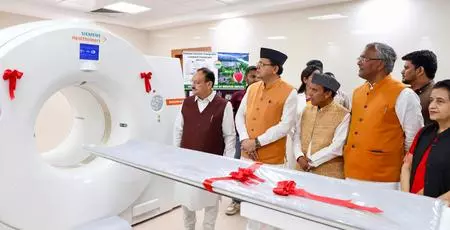
Report suggests US tariffs may hamper medical tourism industry
text_fieldsNew Delhi: As medical costs rise in the United States, an increasing number of patients are seeking overseas for more affordable treatment alternatives, and proposed tariffs may have an influence on the medical tourism industry, according to a recent analysis.
US trade policy has seen notable changes recently, particularly with regard to import tariffs on countries such as China.
Though these policies are usually justified by economic and geopolitical considerations, they also impact other areas, including the medical device industry and, more specifically, medical tourism.
One growing outcome is how these tariffs are affecting medical tourism — the practice of travelling to another country to receive healthcare services, according to GlobalData, a leading data and analytics company, IANS reported.
The US has imposed steep tariffs on a range of medical products imported from China, including syringes and needles, rubber medical and surgical gloves, and facemasks.
“These items are integral to a wide variety of medical procedures and daily healthcare operations. The imposition of tariffs on such goods has disrupted supply chains, constrained hospital procurement strategies, and driven up the cost of healthcare delivery across the US,” said the report.
In response to these rising costs, a growing number of Americans are turning to medical tourism. Popular destinations include Mexico, India, Thailand, and Costa Rica, which offer competitive pricing and internationally accredited healthcare facilities.
For example, the average cost of a knee replacement surgery in the US can exceed $50,000, but the same procedure in India or Mexico can be performed for $8000-$12,000.
As US healthcare providers face increased operational costs due to tariffs – especially on imported surgical instruments, diagnostic equipment, and protective gear – the price gap between domestic and international care continues to widen, creating a financial incentive for patients to consider treatment overseas.
“While the intended impact of tariffs may not have been to effect healthcare, they do shape patient behaviour. The rise in the cost of medical devices ultimately leads to more out-of-pocket expenses for patients,” said Alexandra Murdoch, Senior Medical Analyst at GlobalData.
US tariffs on medical imports are reshaping not only international trade relationships but also domestic healthcare economics. The direct result is an increase in the cost of medical care, which disproportionately affects uninsured and underinsured populations.
One of the most notable responses to these price pressures has been a rise in outbound medical tourism. Patients are seeking high-quality, affordable care in countries that are not impacted by these tariffs — a trend that is likely to continue if current trade and healthcare cost trajectories remain unchanged.












